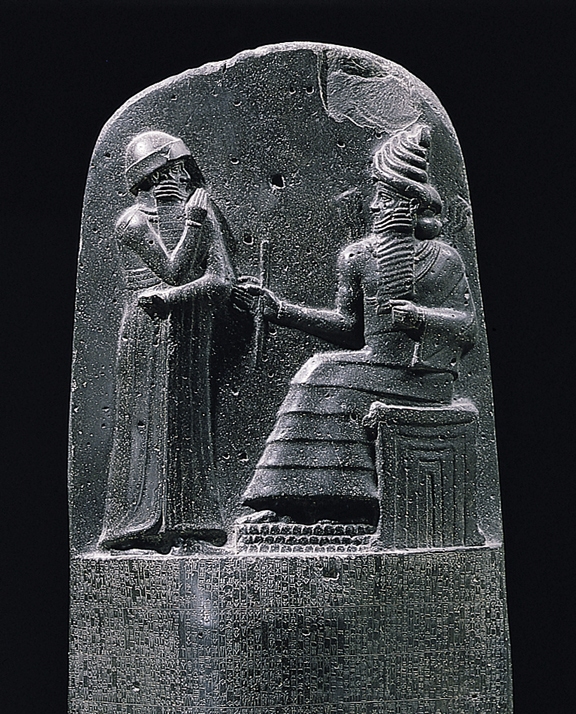
This chapter should give a general background to the geography, history and literature of the ancient Near East. It is surprising to many that among ancient Near Eastern civilizations, Israel is not particularly old, particularly large as an empire, or advanced by many measures of civilization (other than having the most lasting impact).
Although we will see this particularly so in the law codes, in many ways Israel participates in the literature and culture of the ancient Near East. Similarities include literary genres and motifs, both general and specific. Although it might be a mistake to exaggerate the consistency with which Israel differs, in general it is safe to describe the gods of Israel’s neighbors more as social, political, dramatic, and diplomatic. They have values, such as justice, and deal with consequences of behavior, but tend to be less concerned with moral absolutes than Israel’s God.
Blenkinsopp traces a development from unregulated tribal justice, to tribal justice regulated by inter-tribal agreement, to the centralization of legal authority under the monarchy (Israelite monarchy 1000–597 BCE). This is probably true, but as Blenkinsopp points out, hypothetical. As we shall see the major date for a form of Deuteronomy is 622 BCE. The Covenant Code is older, but probably not pre-monarchic. When Blenkinsopp talks about the tribal ethos he is talking about a reconstruction of a phase before any texts we have.
Blenkinsopp suggests that the principle of corporate liability is a carry-over from a time when households, clans, and tribes were legal “units” (cf. a Mafia gang war in which I might seek vengeance against anyone from the rival family, not necessarily the individual member that killed my relative). The move toward individual prosecution implies a more powerful state.
Here are some equivalencies that may be helpful.
On pages 98–99 when Blenkinsopp rejects the view that Israel’s laws stand out in the ancient Near East because they are more humanitarian and enlightened, he is disagreeing with Moshe Greenberg’s article that we will read for next week. Both sides of the debate are worth understanding. To them I would add the suggestion that by “humane” and “enlightened” we often mean “like us.” If our values are like Israel’s values that may be because we are influenced by Israel’s literature, directly and indirectly.
When reading Hammurabi, it might be interesting to keep in mind Blenkinsopp’s distinction of a “strong state” that asserts its authority in ways that might otherwise be the jurisdiction of the head of household, clan, or tribe. Might there be a polemic in Hammurabi’s claim to jurisdiction in all these matters?
Start by reading the Covenant Code straight through, and get a sense of the kinds of issues legislated and the social realities reflected. In the coming weeks we will turn closer to several specific issues, including slavery and women (marriage, divorce, inheritance, legal status). We can spend some time clarifying confusions and questions from anywhere in the Covenant Code. I think a good introductory exercise in comparing ancient Near Eastern laws will be the laws of the goring ox, so pay extra attention to Exodus 21:28–36.
Besides the translation, there are a couple of useful features in Roth. In front there are maps and a list of weights, measures, and equivalencies. In the back (pp. 267–273) is a very useful glossary, and an index that might help when working on a paper. In particular, read the glossary entry for awilu, since it is a major concept with no clear counterpart in biblical or American law. I can also recommend Roth’s introductory discussion on pages 4–7 as to whether these “codes” were more literary constructs or actually used in the courts.
Again, I recommend starting by reading straight through and trying to get a sense of the social, economic, and other legal realities that were issues in the law collection. Figuring out the logic behind the laws can be fun, but leave time to get through all of them.
Spend more time on the laws of the goring ox, LH ¶¶250–252 (optional: LE ¶¶53–57).
Some of the issues in Hammurabi that we will consider more in the coming weeks:
